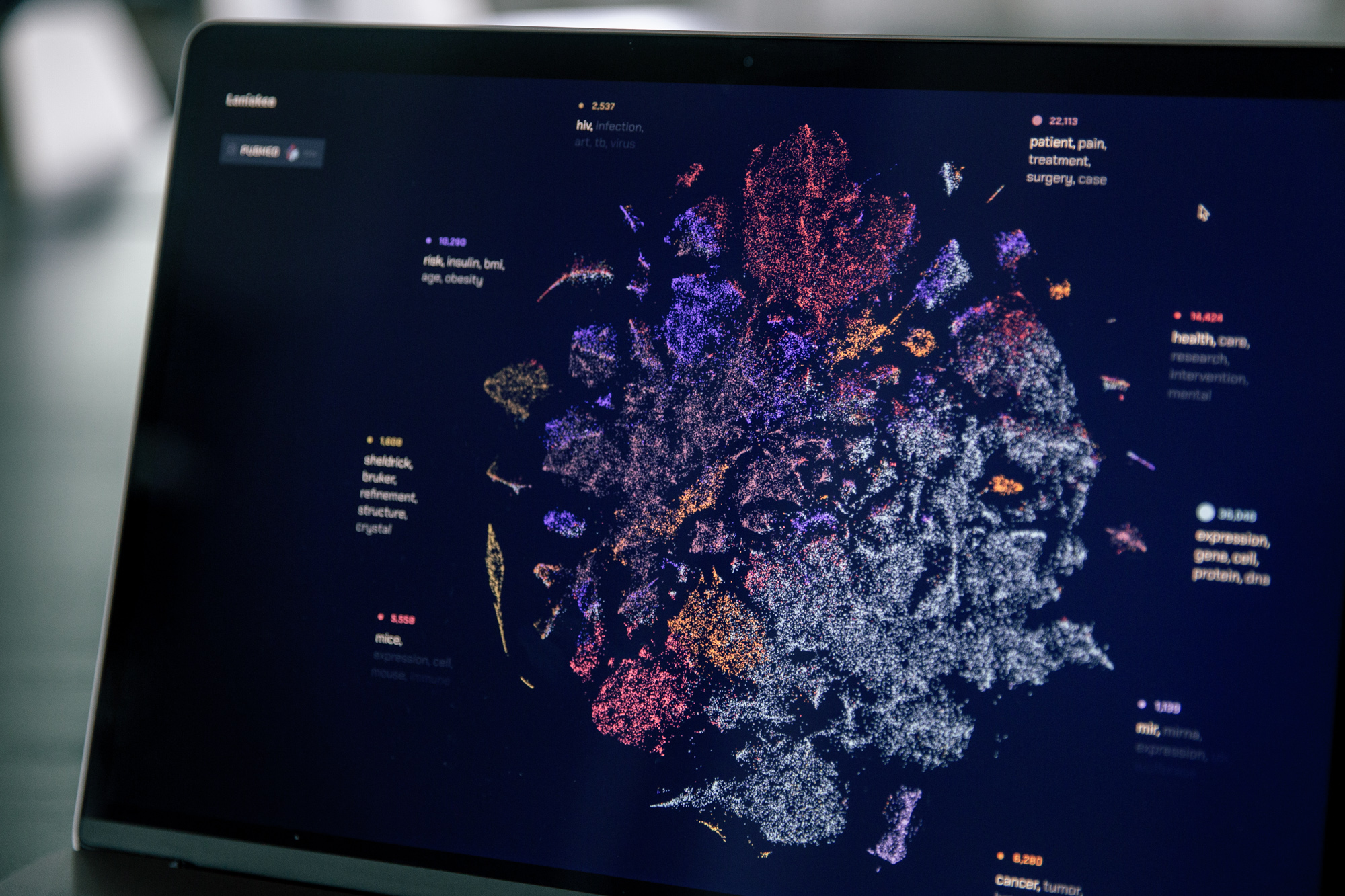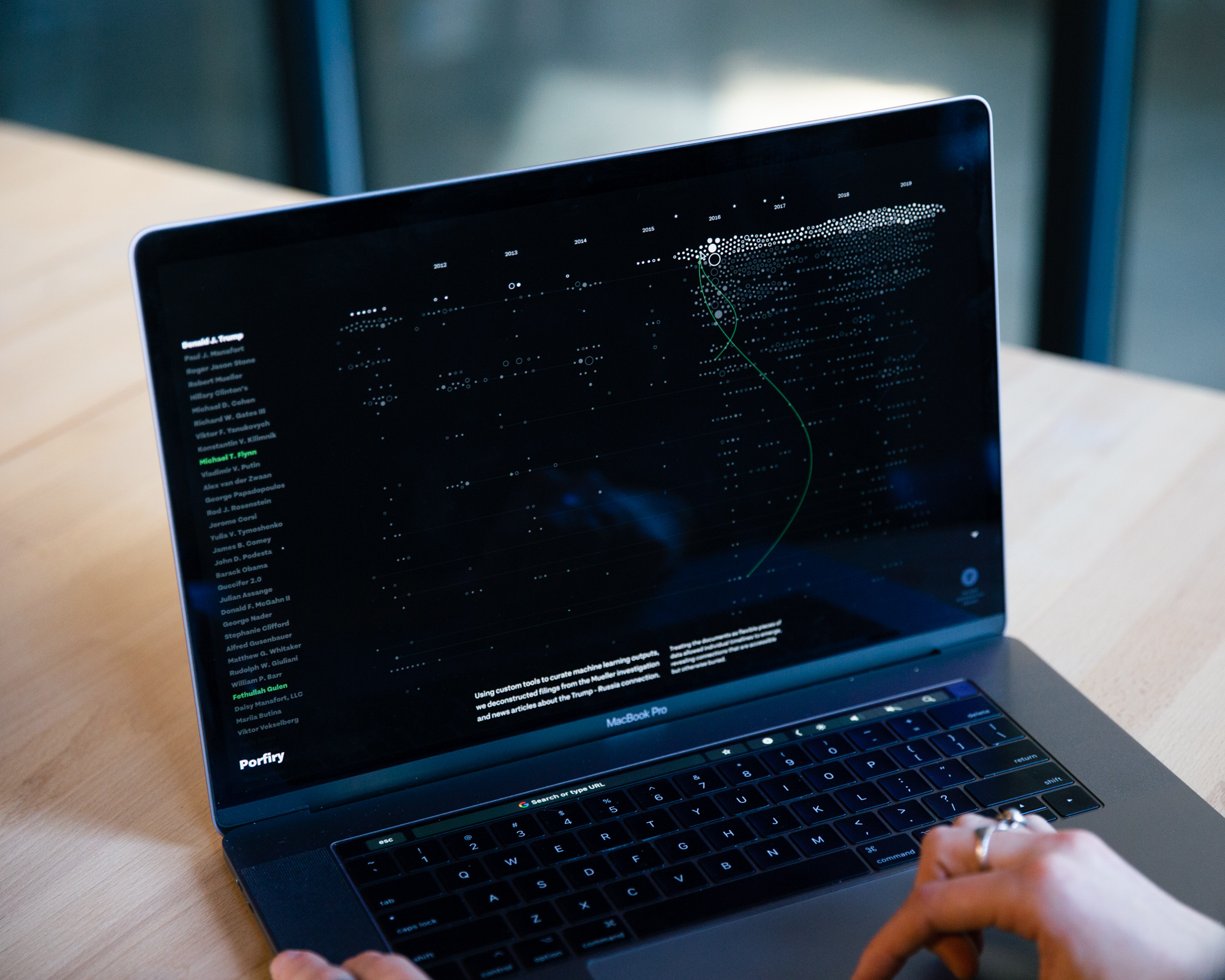Growing amounts of information. Finite amounts of time.
Across domains and sectors, people have more documents to understand and less time to read. At Fathom, regardless of the type of archive—oral history transcripts, Wikipedia articles, Facebook ads—we deconstruct it into meaningful data using algorithms, and finalize these results with custom curation tools. Rather than working with documents as a series of pages in a file, we build tools and visualizations tailored to how people want to use and engage with the information they contain.

Our archive exploration products give amateurs the insight of domain experts and turn experts into super-experts.
With the overwhelming amount of digital information available to us, most people rely on a search function to find what they need in large document collections. But searches only reveal results directly tied to the terms you’ve entered, hiding the surrounding context of related ideas that deepen your understanding of a topic. Laniakea maps the entire landscape of a document set according to its most meaningful content, enabling users to quickly grasp and navigate thousands or even millions of documents.
Even with just a few dozen files, it can be challenging to figure out where to begin and which sections are the most important. Lantern gives an overview of any collection of documents and guides users through the information, prioritizing the unique sections and suggesting related passages. The platform combines algorithmic analysis with human-centered design to enable users to quickly navigate and understand their information.

We also create custom visualizations tailored to specific document collections. Their interfaces are designed to reflect how people think about the information, rather than how the information is stored.
Approaching the documents as a collection of flexible data points—such as people, places, dates, and actions—allows us to reconnect the pieces to reveal hidden relationships and new insights from the text.
Porfiry uses the data extracted from court filings and news articles on the Trump-Russia connection to create chronological flows for individual participants. The project reveals connections that would otherwise be buried in the sheer volume of the documents.
ConText enables you to quickly gather impressions of how people and groups are described in the Mueller Report. Rather than relying on hand-picked quotations or excerpts, these associations give an overall picture of where individuals stand within the investigation.